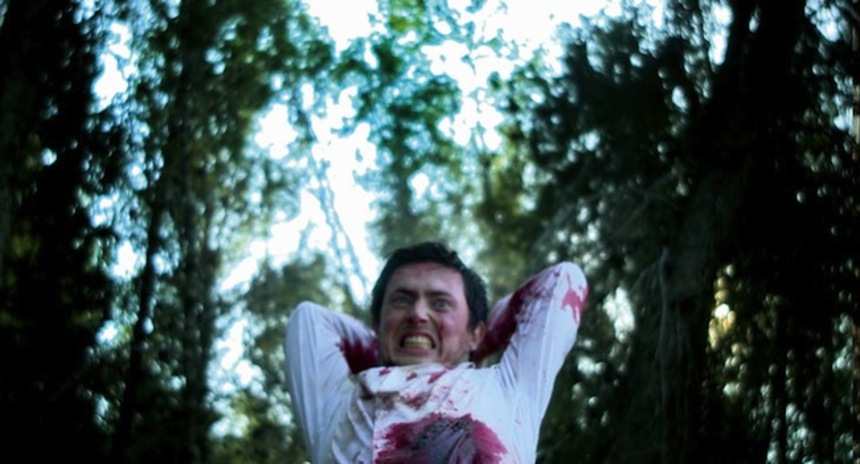Tribeca 2011 Review: RABIES

The Tribeca programming notes,
which contend that Rabies (Kalevet) is "worthy of its mantle
as Israel's first-ever horror film," aren't exactly as encouraging
as they seem to feel they are. After all, do you really want the film
you're seeing to be billed as the potential answer to a future trivia
question? And how is a film "worthy" of being the first anything--either
it is or isn't, right? Fortunately, Rabies represents more
than a glorified footnote in an international encyclopedia of obscure
horror. A whole lot more, actually. In fact, it's the most fun I've
had with a horror flick all year... and this is a genre that often feels
piped into my system continuously, IV-style.
When it also evokes the "slasher
in the woods" über-cliché, the text of the fest's official plot
synopsis isn't too promising either. So between that and what sounds
like a somewhat generic, Cabin Fever-esque title, I seriously
considered giving the film a pass; it was just too easy to dismiss its
inclusion in Tribeca's "Cinemania" strand as a symptom of cinema
exotica, wherein a foreign-grown B-movie is automatically considered
more worthy, or at least more interesting, than the homegrown equivalent
(this is a disease I myself contracted years ago when it comes to action
movies).
Certainly with its opening, which features terse dialogue spoken over a black screen, Rabies begins on a strong note--it pulls you in with its sheer intensity, and pretty much holds you in place thereafter. "But wait a sec," I cautioned myself. "You've seen plenty of horror movies that start in engaging ways and then turn depressingly formulaic in the first fifteen minutes or so. Steady, my boy... Let's not get too excited just yet."
Another very early sequence,
one involving some good-looking young people laughing and flirting it
up while on a road trip, started to confirm my suspicions. I'd seen
this same slasher set-up in Scandinavia, Central Asia, Appalachia, and
everywhere in between. And while, yes, the film was consistently diverting,
the only truly innovation by the filmmakers seemed to be making these
characters tennis players--an alternate way of getting the women into
cute skirts instead of making them cheerleaders or fetching "school
girls."
Ah, but little did I know that
the strategy of writer-directors Navot Papushado and Aharon Keshales--strategy
on the levels of plot, style, and theme--was to lull me into a sense
of snarky complacency, and then whack me with a sledgehammer to the
skull (and yes, that's an image from the film). While far less overtly
"meta" than Scream 4, Rabies is without question more
profoundly postmodern: it uses the audience's built-in awareness of
horror conventions not simply to comment on those conventions, or the
latest genre trends, but on our humanity itself. Sound lofty? Yep, it
is. And what's more, Rabies achieves its edifying goals without
ever sacrificing the kind of pulpy pleasures that one expects from the
genre: it never descends to being merely a pretentious cerebral exercise.
Instead, it relies on dramatic irony, and a nearly tear-inducing sense
of the truly tragic.
Oh, and in case you hadn't
noticed, this review has been vaguer, and has included more references
to my subjective reactions (without calling out the specifics that triggered
them), than the typical piece I've done for ScreenAnarchy. Never really one
for plot synopses, I feel that in this case my stance is more justified
than usual. If you know anything in advance about Rabies other
than that there's violence, death, and mayhem, you probably know too
much.
All right, let me try to be a tad more concrete: you sit there watching Rabies, waiting for a serious weakness to reveal itself, but the editing, pacing, humor, compositional angles, direction of the performances, music, and so on--none of these elements disappoint. Rather, Rabies distinguishes itself as one of the most original and deeply horrific films in recent memory.
[Photo credit: Guy Raz]







